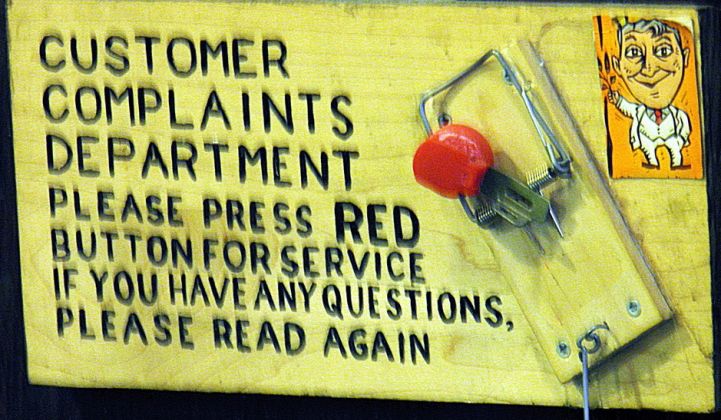What good is it to teach your customers to ask smart questions about their smart meters if their utility customer representatives can't respond with smart answers? That’s one of the many pitfalls that utilities need to avoid to keep smart grid projects from being rejected by customers, according to the latest report from the Smart Grid Consumer Collaborative.
The industry research group has collected interviews from dozens of utilities to come up with 10 key suggestions for customer-friendly smart grid deployments. Many of the takeaways of the report come as little surprise: utility customers lack awareness of their own energy use patterns; they care a lot more about saving money than being eco-friendly; and they’re only going to take simple and easy steps to use power more efficiently.
But underlying all the guidance on how utility customers interact with their smart meters, utilities face an in-house challenge to get their own staff up to speed, SGCC Executive Director Patty Durand told me in an interview last week.
“Utilities need to change their entire customer experience from their business-as-usual operations to integrating smart grid programs across their whole business,” she said. “The utilities that we talked to that have been most successful have made this transformation.”
Here are a few examples from the report:
- Texas-based Austin Energy trained customer service reps on how to explain high bills, and installers notified the billing department of customers whose old meter may have been running slow, and who thus might be expected to see higher bills with their new meter. The utility also focused on answering customer complaints right away, and reported few customer complaints and high levels of customer satisfaction as a result.
- Likewise, Texas utility CenterPoint trained meter installers, customer reps and staff as a whole on its 2-million-plus smart meter deployment, including putting nearly one-fifth of its employees through an online course to become smart grid “ambassadors” to the public.
- San Diego Gas & Electric educated all employees on its smart grid projects, hired a management team to oversee AMI deployment and created a specialized customer service team to resolve complaints. Despite glitches that forced the utility to replace 33,000 meters last year, the utility reported “very few significant customer complaints,” and won an award for best customer service at the Metering International conference in April.
Failing to take these kinds of approaches in a smart meter deployment, on the other hand, can lead to bad PR. Pacific Gas & Electric has been the poster child for these kinds of problems. Last year, an internal review and independent audit both confirmed that the utility failed in the first few years of its multi-million smart meter rollout to explain to customers how their smart meters worked, or even to use the meter system properly to fix problems like incorrect billing.
Not all customer complaints can be fixed by good customer service. Just take the customers of PG&E and Central Maine Power who believe, against all scientific evidence, that their wireless smart meters are causing health problems. But there are still plenty of smart and effective changes that can help smooth the way for smart meter deployments, Durand said.
Startups like Opower that use behavioral science and data analytics to encourage customers to save energy via utility communications are reaping some of the rewards of this utility challenge. Indeed, Opower is working with PG&E and another customer relations-challenged utility, Baltimore Gas & Electric, and recently announced a plan to build consumer energy awareness in partnership with Facebook and the National Resources Defense Council.
But to integrate smart grid technology into disparate utility departments will likely require a massive investment in enterprise software and management. GTM Research predicts U.S. utilities will spend $8.5 billion on so-called smart grid enterprise systems between now and 2015, making it one of the fastest-growing segments of the smart grid market.
SGCC’s study didn’t extend to how well utilities are integrating their smart meter systems into their broader workforce activities, Durand said. But that’s doubtless a critical area for utilities trying to use their smart meters to detect and fix power outages, diagnose distribution grid problems and connect smart appliances, plug-in vehicles and rooftop solar systems.
In fact, one of the report’s key findings was that utilities shouldn’t “over-promise” customer-facing smart grid features that won’t be ready for several years yet. Several utilities reported changing their marketing to de-emphasize the ability to hook up smart meters to in-home energy management devices after customers started asking for those services, for example. Given that almost no utilities have started to connect their smart meters to in-home devices yet, beyond pilot projects, that seems like a wise move.
Among the report's other findings:
- Financial incentives remain the single most reliable path to getting customers to sign up for energy efficiency programs. Even so, increasing the dollar amount -- say, going from $25 to $50 -- didn’t really bring in any more customers.
- Researchers also found that very few utilities are even testing out “attitudinal” segmentation marketing, that is, pitching programs and products based on customers’ cost consciousness, preferred comfort levels, green leanings and technology enthusiasm.



